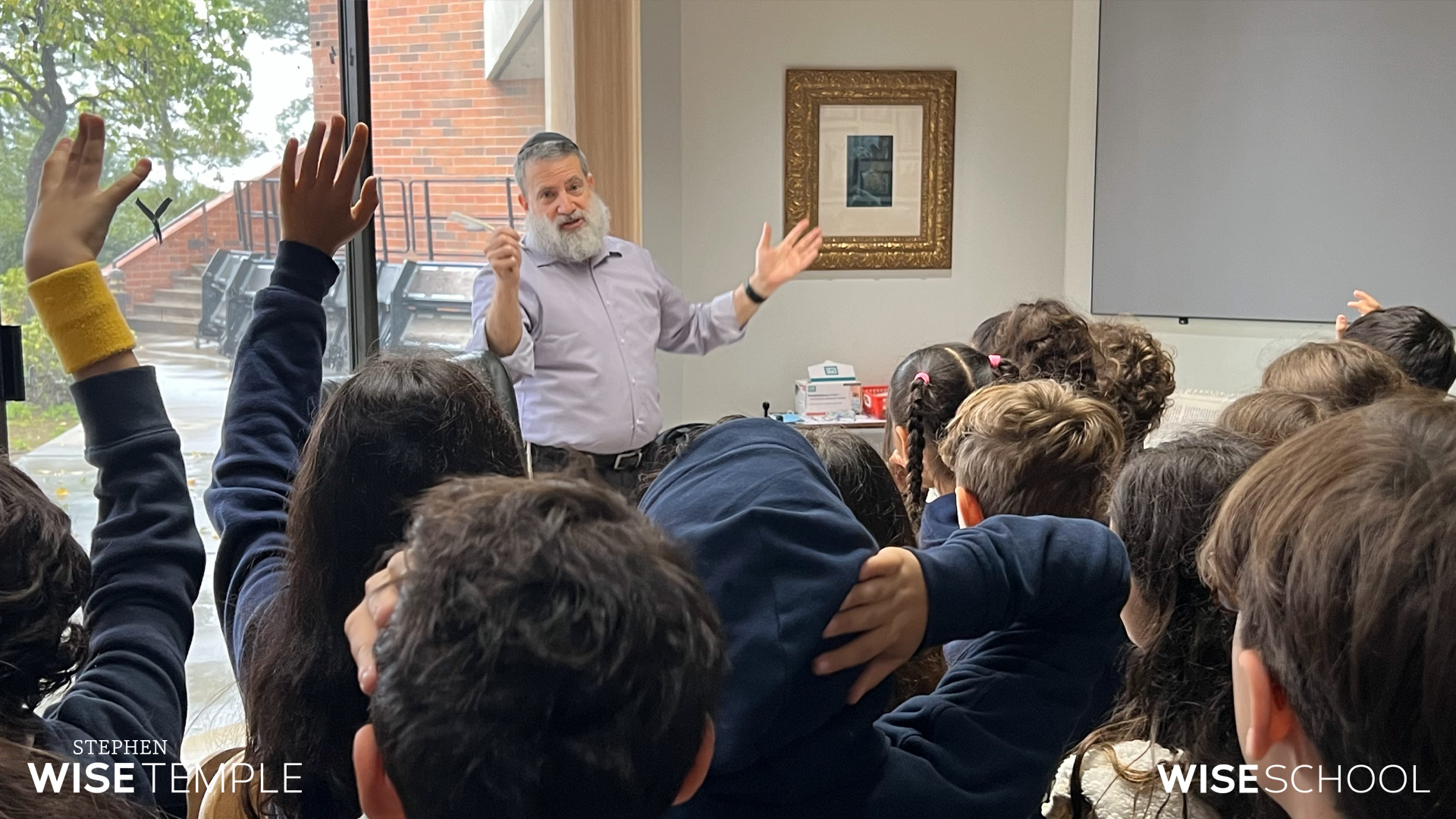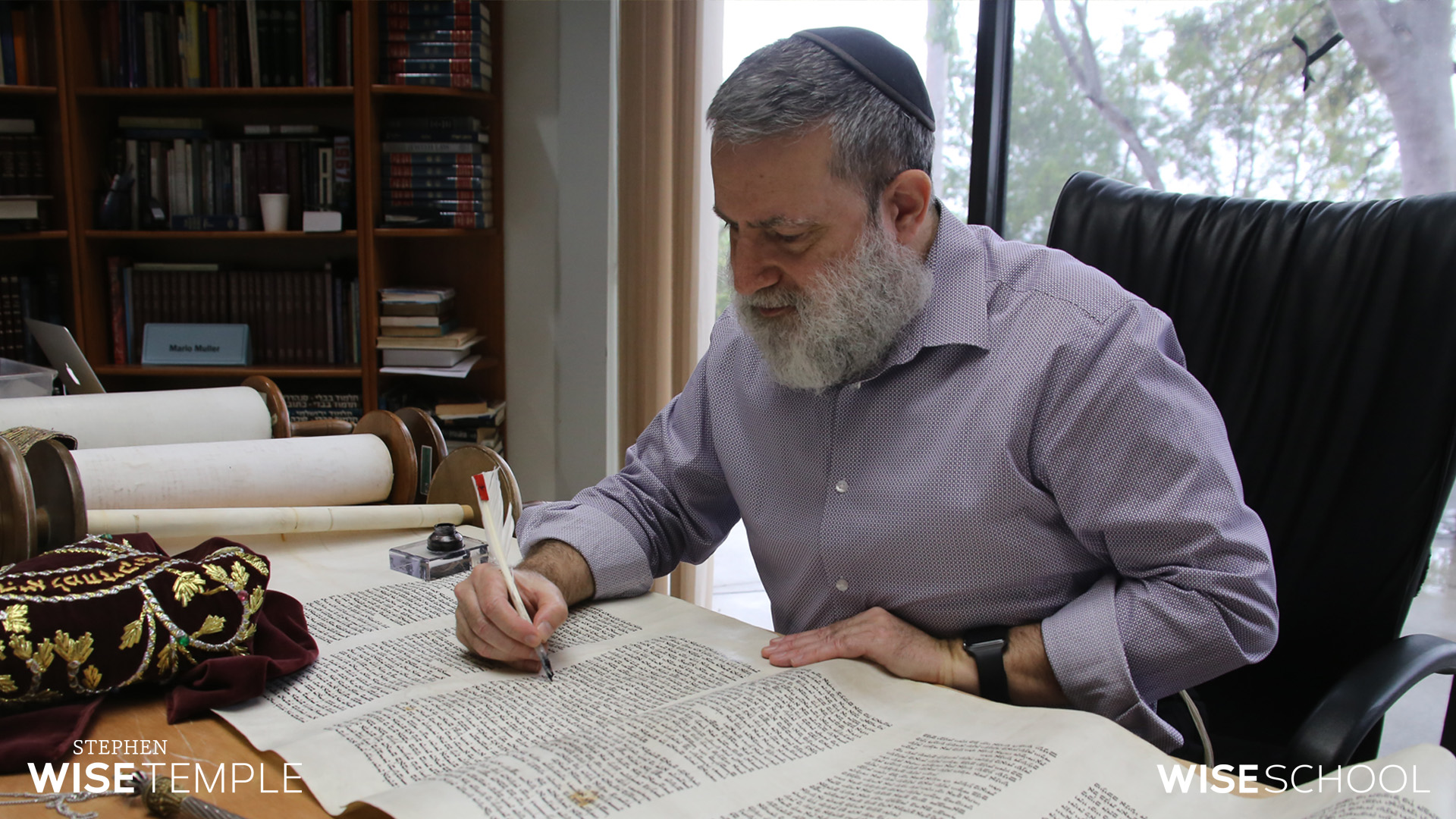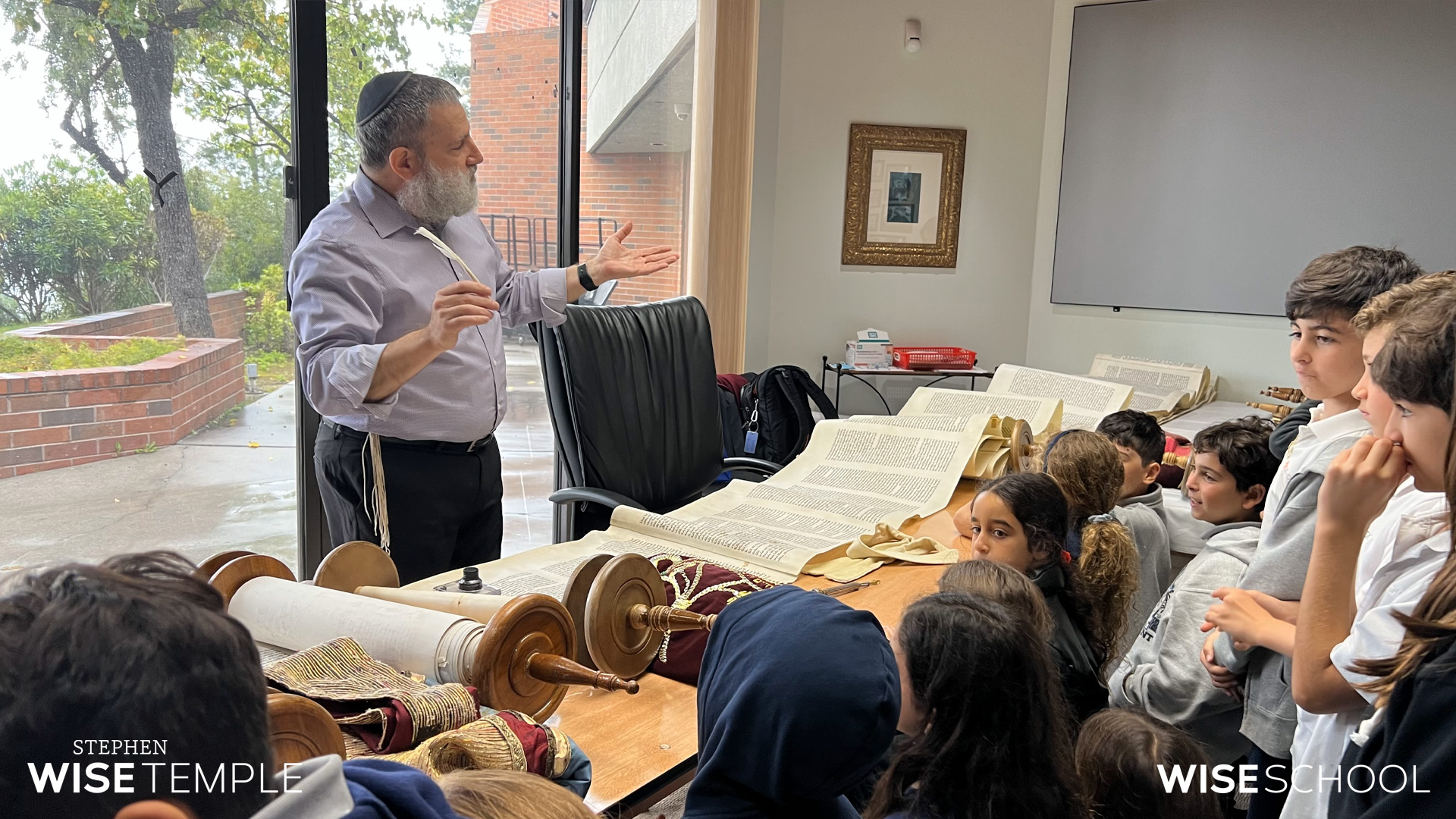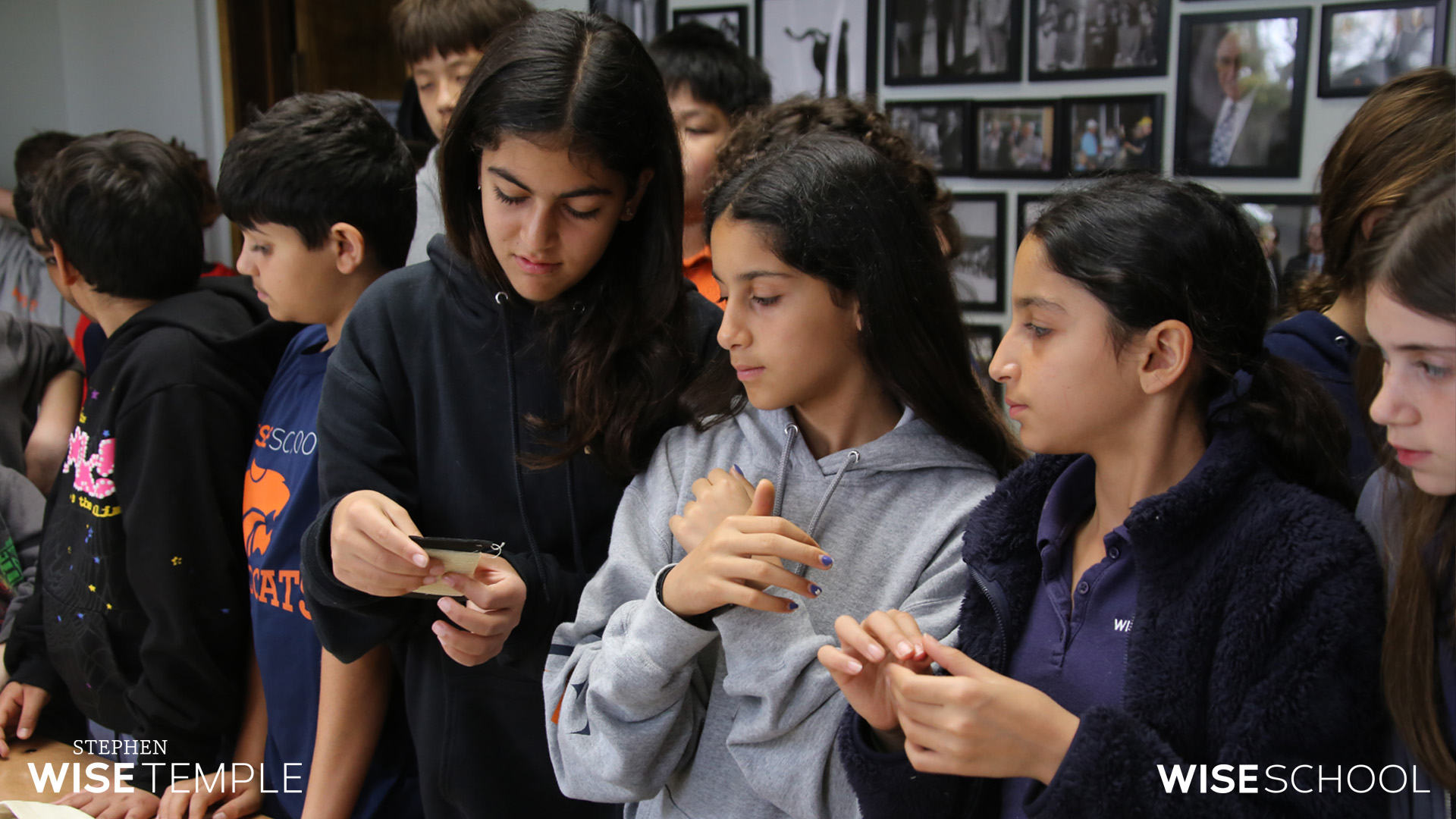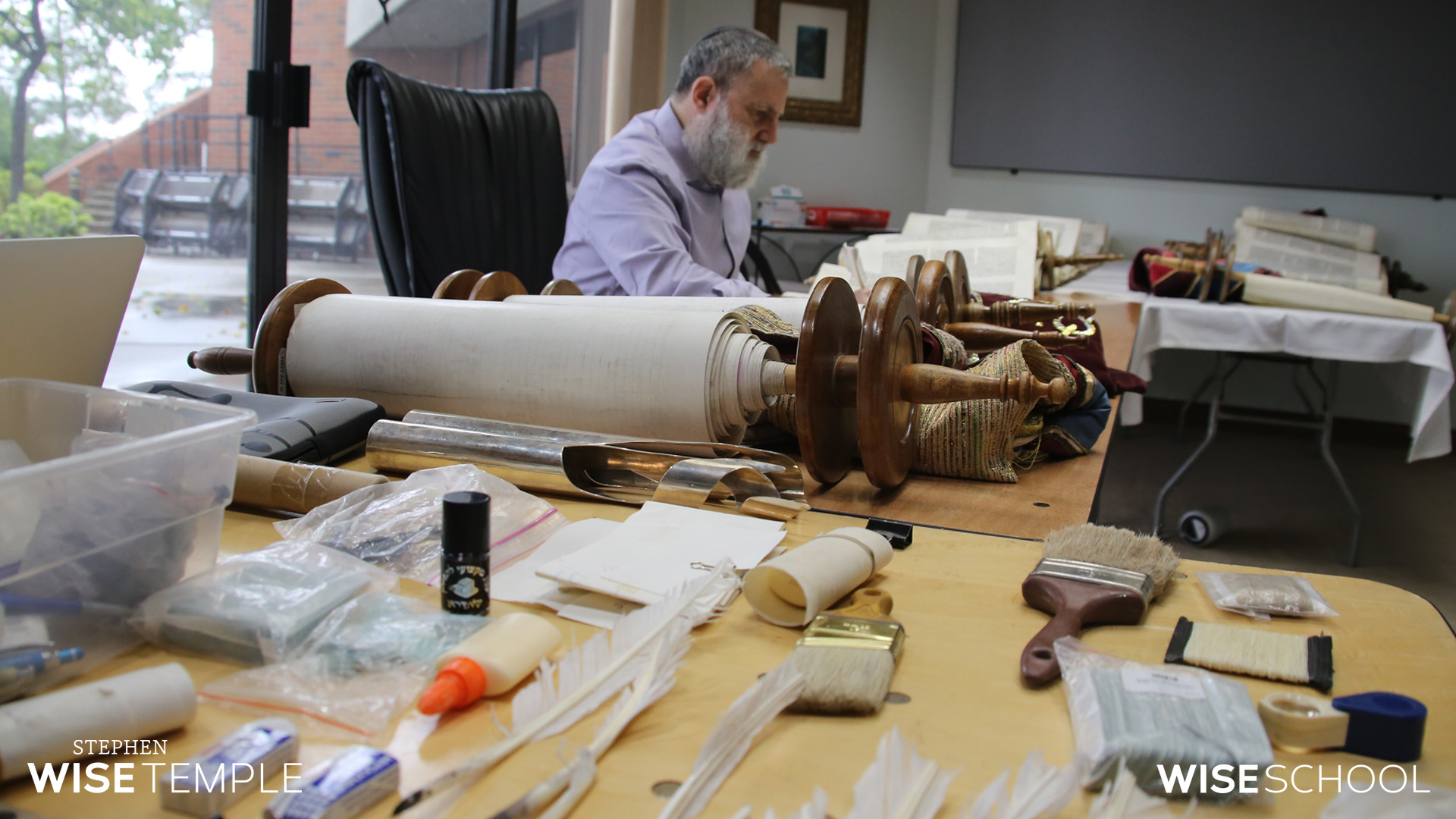On Monday, Wise School students from grades three and five got the chance to observe a sofer working on Stephen Wise Temple’s four most-used Torah scrolls.
With Stephen Wise Temple’s four most-used Torah scrolls arrayed out on tables in front of him, Rabbi Moshe Druin held up a quill between his right thumb and forefinger
“What,” he asked the Wise School third graders who packed the Chapel Study on Monday morning, “do you think this is a feather from?” Hands raised. “A dove?” asked one student. “Wannnhhh!” Rabbi Druin answered, affecting the sound of a ‘wrong’ buzzer. The next contestant raised a hand: “A pigeon?” Again, “Wannnhhh!” Finally, a correct answer: “A turkey?” “Ah, yes!” Rabbi Druin smiled. “Or, as we’d say in New York, where I grew up, a toy-key.”
With a presentation designed to engage and inspire, Rabbi Druin spent the morning educating Wise School third and fifth graders about what it takes to become a sofer. The students handled several sacred scrolls, saw the Wise Torah scrolls up close, and learned about how Jewish ritual texts are produced.
“You’ve got to reach them and get them excited, instead of just saying, ‘Well, here’s what I do,'” Rabbi Druin said. “Otherwise, it’s a bracha l’vatala, a wasted blessing.”
Hebrew for “scribe”, a sofer is a Jewish craftsman (often, but not always, a rabbi) who transcribes holy texts onto parchment using traditional Hebrew calligraphy.
Rabbi Druin taught Wise School students about the process of hand-scribing a Torah scroll with quill and ink, the tools needed to do so, and the years of preparation it takes to become a sofer. The job requires a high degree of artistic skill—a master calligrapher and artist, Rabbi Druin was previously a cartoonist before becoming a sofer—as well as meticulous attention to detail. Not only must sofrim write the most sacred texts flawlessly over and over and over again, but they are also charged with their repair. As Rabbi Drubin told the students, he’s a “Torah doctor.”
Along with creating the beautiful letter forms for sacred texts, sofrim are specially trained to repair those texts that have become worn or damaged over time. The evaluation and restoration of Torah scrolls like those used for Wise’s larger services—like b’nai mitzvah and High Holy Days—keep them in top condition. It is fitting, then, that his visit happened to come just after we celebrated Shavuot, the holiday which commemorates the giving of Torah at Mt. Sinai, according to our tradition. Regular visits from sofrim allow us to literally pass Torah from generation to generation.

